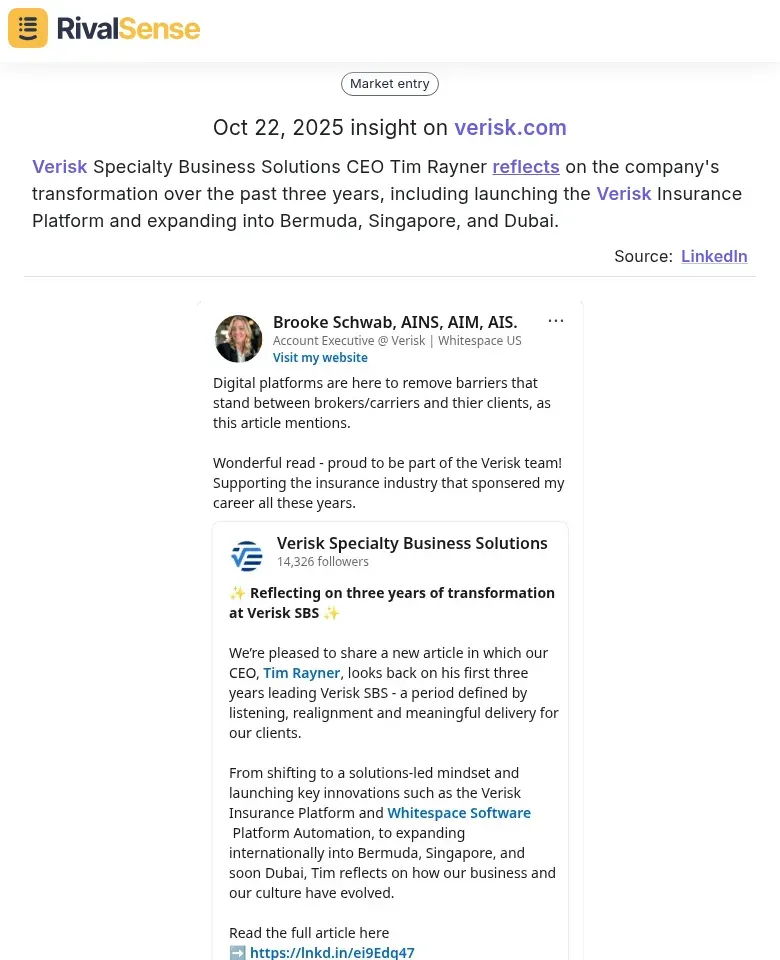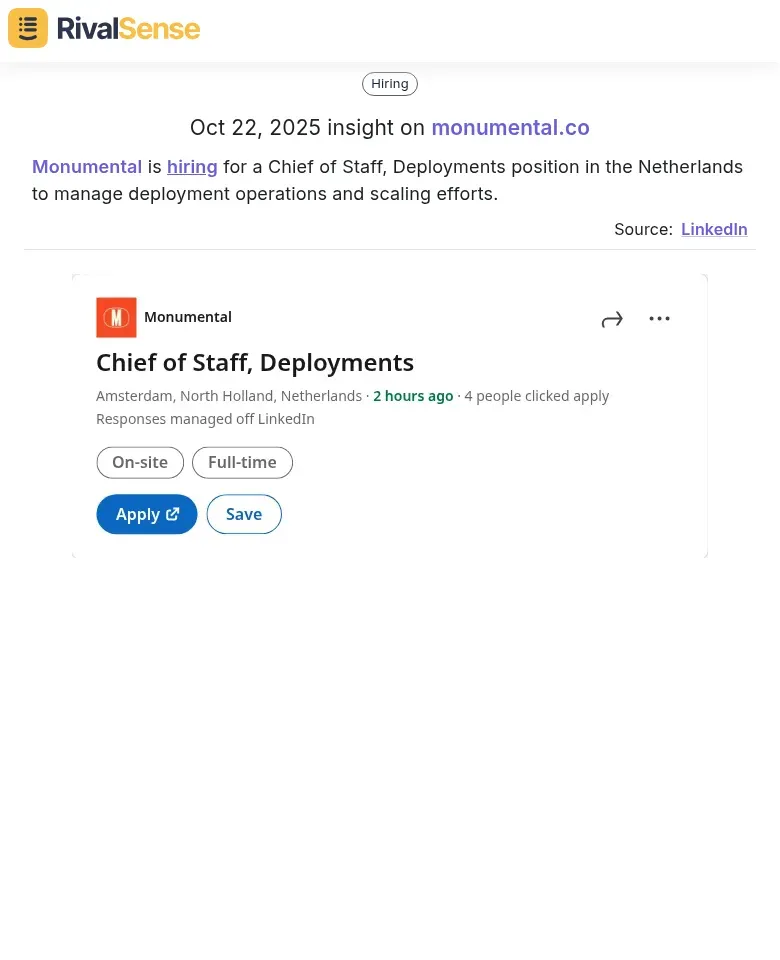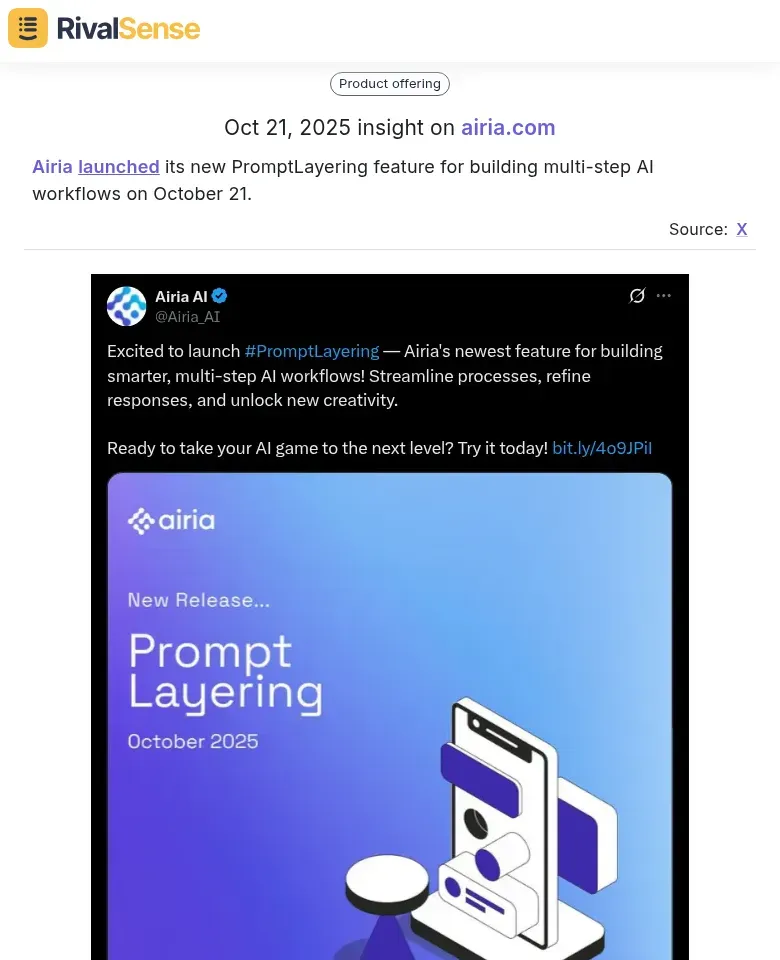How to Analyze Competitor Ads: A Practical Guide for B2B Leaders
By the RivalSense Team | October 23, 2025
In today's competitive B2B landscape, understanding what your competitors are doing in their advertising campaigns isn't just helpful—it's essential for survival. Competitor ad analysis gives you the insights needed to refine your messaging, optimize your budget, and identify opportunities your rivals are missing. This guide will walk you through a step-by-step framework to effectively analyze competitor ads and turn those insights into actionable strategies.
Why Competitor Ad Analysis Matters
Gaining a deep understanding of your competitors' advertising efforts can significantly impact your business growth and market positioning. By systematically analyzing their ads, you can uncover patterns and strategies that inform your own marketing decisions. Here are key reasons why this practice is crucial:
- Budget Optimization: See where competitors are spending and get better ROI from your ad spend
- Message Refinement: Identify what messaging resonates with your shared target audience
- Gap Identification: Spot opportunities competitors are overlooking
- Trend Spotting: Stay ahead of emerging advertising trends in your industry
The 5-Step Framework for Analyzing Competitor Ads
Step 1: Identify Your True Competitors
Building a clear list of competitors is the foundation of effective ad analysis, as it ensures you're monitoring the right players in your space. Start by categorizing them to focus your efforts efficiently and avoid missing hidden threats or opportunities.
Direct Competitors: Companies offering similar solutions to the same target market
Indirect Competitors: Companies solving the same problem with different approaches
Aspirational Competitors: Industry leaders you want to emulate
💡 Pro Tip: Don't just focus on the obvious players. Sometimes the most valuable insights come from smaller, more agile competitors.
Step 2: Track Their Ad Platforms and Channels
Monitoring where your competitors advertise helps you understand their channel strategy and audience targeting. This step allows you to identify underutilized platforms and optimize your own ad spend across multiple touchpoints.
- Search Ads: Google Ads, Bing Ads
- Social Media Ads: LinkedIn, Facebook, Instagram, Twitter/X
- Display Networks: Programmatic display advertising
- Native Advertising: Sponsored content on industry publications
- Retargeting Campaigns: Ads targeting previous website visitors
Step 3: Analyze Ad Creative and Messaging
Diving into the creative elements of competitor ads reveals what resonates with your target audience and why. Use a structured approach to track and compare messaging, visuals, and calls-to-action to refine your own campaigns.
| Element | What to Look For |
|---|---|
| Headlines | Pain points addressed, keywords used |
| Body Copy | Value propositions, tone, and clarity |
| Visual Elements | Imagery, design consistency, branding |
| Calls-to-Action | Action verbs, urgency, alignment with goals |
| Landing Pages | User experience, conversion paths, offers |
Step 4: Monitor Ad Frequency and Timing
Understanding the timing and frequency of competitor campaigns can highlight seasonal trends and testing strategies. This insight helps you plan your ad schedules to maximize impact and avoid clutter.
Track:
- Campaign Duration: How long do campaigns run?
- Seasonal Patterns: Are there industry-specific timing patterns?
- A/B Testing: What variations are they testing?
- Budget Patterns: When are they increasing/decreasing spend?
Step 5: Measure Performance Indicators
While exact metrics aren't visible, you can infer ad performance through observable patterns. This step focuses on interpreting signals like ad longevity and creative updates to gauge what's working for competitors.
- Ad Longevity: Ads that run longer are likely performing well
- Creative Refresh Rate: Frequent changes may indicate optimization
- Channel Consistency: Platforms they continue investing in
Practical Tools for Competitor Ad Analysis
Free Methods
Manual monitoring is a cost-effective way to start gathering insights without investing in tools. It involves actively observing competitor ads across various platforms to build a baseline understanding.
Manual Monitoring:
- Use incognito browsing to see personalized ads
- Search for competitor brand terms to trigger their retargeting
- Follow competitors on social media to see their promoted content
Platform Transparency Tools:
- Use Google's Ad Transparency Center to see search ads
- Check the Meta Ad Library for Facebook and Instagram ads
Paid Tools (from our research)
Investing in specialized tools can automate and deepen your analysis, saving time and providing more comprehensive data. Here are some options based on industry research:
SpyFu: Excellent for Google Ads intelligence with comprehensive ad history and keyword tracking
PowerAdSpy: Specializes in Facebook and Instagram ad intelligence with extensive databases
SEMrush: All-in-one platform with PPC competitor analysis features
The RivalSense Advantage: Beyond Just Ads
While ad-specific tools are valuable, they often miss the broader business context that drives advertising strategies. RivalSense provides holistic competitor intelligence by tracking key business activities, helping you understand the 'why' behind ad campaigns. For example, leadership insights can reveal strategic shifts that precede new advertising efforts.

Insight: Verisk Specialty Business Solutions CEO Tim Rayner reflects on the company's transformation over the past three years, including launching the Verisk Insurance Platform and expanding into Bermuda, Singapore, and Dubai. This type of insight is valuable because it signals major strategic directions, allowing you to anticipate how their ads might evolve to highlight innovation and global expansion.
Operational changes, such as hiring key roles, can indicate scaling efforts that often correlate with increased ad spend or new campaign launches.

Insight: Monumental is hiring for a Chief of Staff, Deployments position in the Netherlands to manage deployment operations and scaling efforts. Monitoring such hires helps you predict when competitors might ramp up advertising to support growth initiatives, giving you a head start in planning counter-strategies.
Product updates directly influence ad messaging, as companies often promote new features to attract customers.

Insight: Airia launched its new PromptLayering feature for building multi-step AI workflows on October 21. Tracking product launches like this helps you connect feature releases with ad campaigns, enabling you to adjust your messaging to compete effectively or highlight your unique advantages.
Our platform monitors 80+ sources and delivers comprehensive weekly reports, covering product launches, pricing updates, event participation, partnerships, management changes, and media mentions. This integrated approach ensures you have the full context to make informed advertising decisions.
Actionable Checklist for Getting Started
✅ Identify 3-5 key competitors to monitor
✅ Set up manual monitoring across search and social platforms
✅ Create a tracking spreadsheet for ad creative analysis
✅ Schedule weekly review sessions to analyze findings
✅ Test one insight from your analysis in your next campaign
✅ Consider tools that provide automated monitoring for efficiency
Common Pitfalls to Avoid
- Analysis Paralysis: Don't get stuck in endless data collection—focus on actionable insights
- Copycat Syndrome: Use insights for inspiration, not direct copying
- Channel Tunnel Vision: Look beyond just one platform
- Data Without Context: Understand the business reasons behind ad strategies
Turning Insights into Action
The real value of competitor ad analysis comes from implementation, where you translate observations into improved campaigns. By testing new approaches and optimizing resources, you can outmaneuver competitors and capture market share.
- Test New Messaging: If competitors are addressing a pain point you've overlooked, test it
- Optimize Budget Allocation: Shift spend to underutilized channels
- Improve Landing Pages: Learn from competitor conversion optimization
- Identify White Space: Find opportunities competitors are missing
Final Thoughts
Competitor ad analysis isn't about copying—it's about learning and adapting to stay ahead in a dynamic market. By consistently applying these strategies, you can build a more resilient and data-driven advertising approach that drives growth.
Remember: The most successful B2B companies don't just react to competitors; they anticipate moves and stay several steps ahead. With the right approach and tools, you can turn competitor intelligence into your competitive advantage.
Ready to take your competitor intelligence to the next level? Try RivalSense for free at https://rivalsense.co/ and get your first competitor report today! Our platform tracks competitor product launches, pricing updates, event participation, partnerships, and media mentions across 80+ sources, delivering comprehensive insights in weekly email reports.
📚 Read more
👉 Data-Driven Key Account Identification in Pharmaceutical Logistics
👉 How Topstep's Plus500 Partnership Revealed Competitive Edge
👉 Competitor Website Change Framework for Key Account Growth
👉 Automate Key Account Tracking to Beat Ventilation System Competitors
👉 Boost Productivity with Competitor Product Insights and Intelligence
